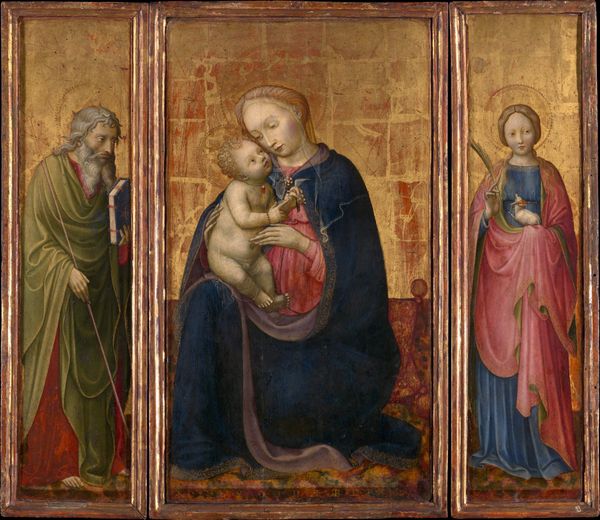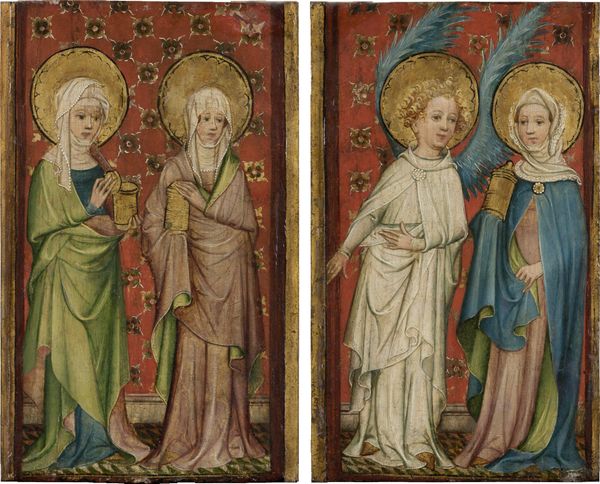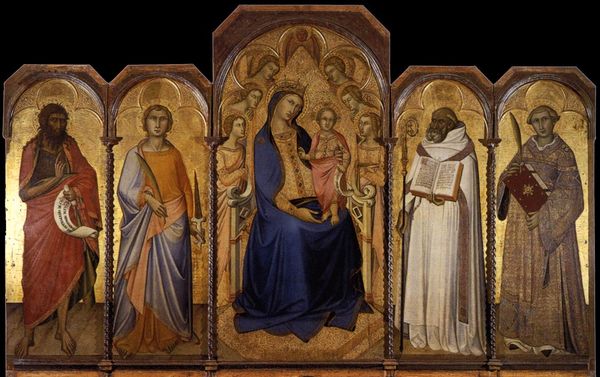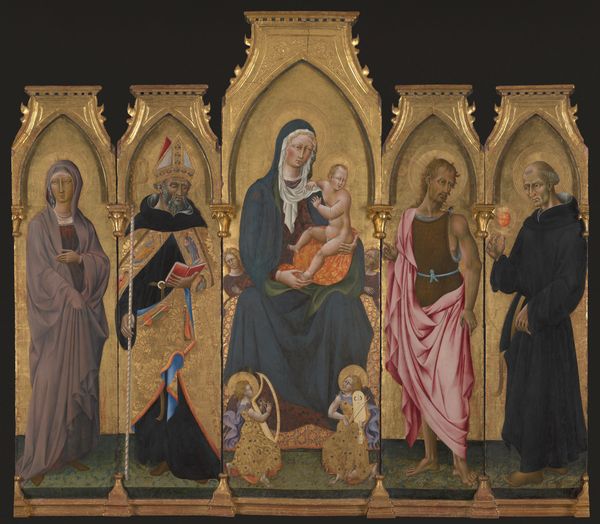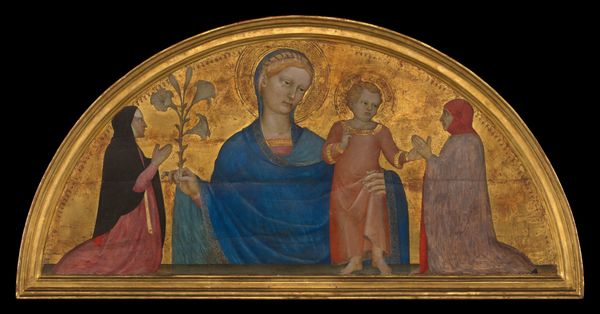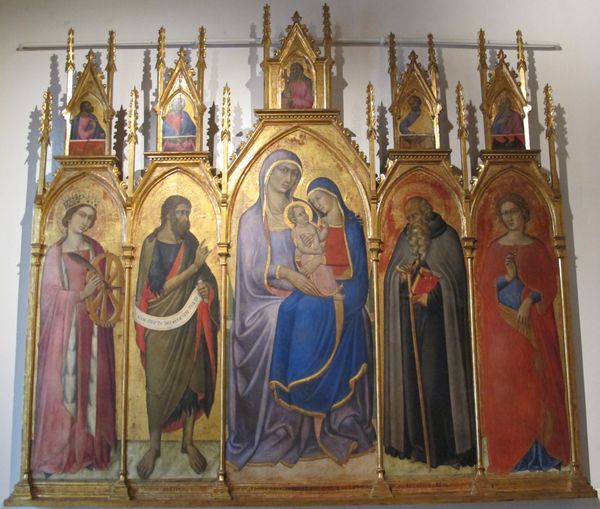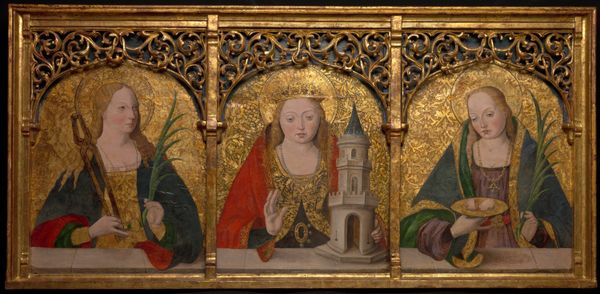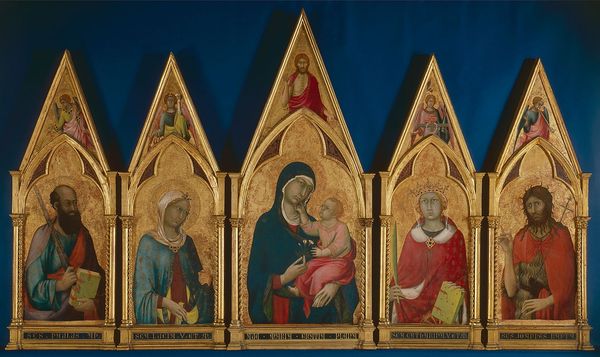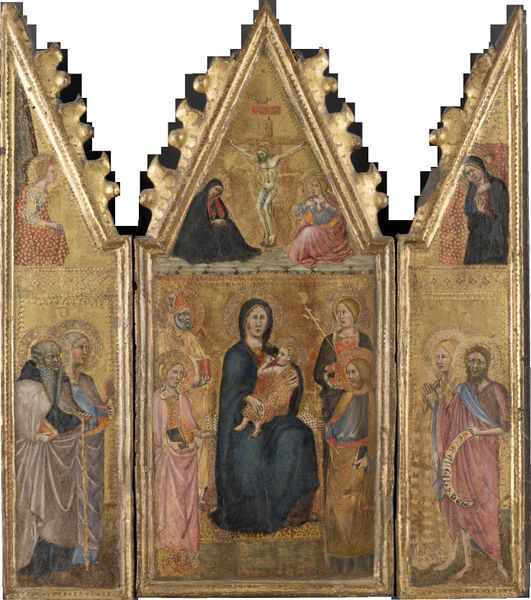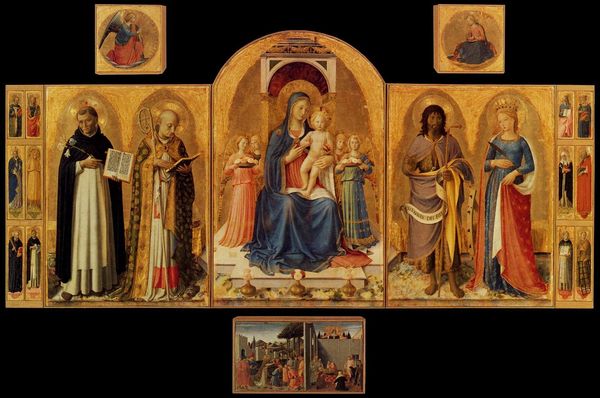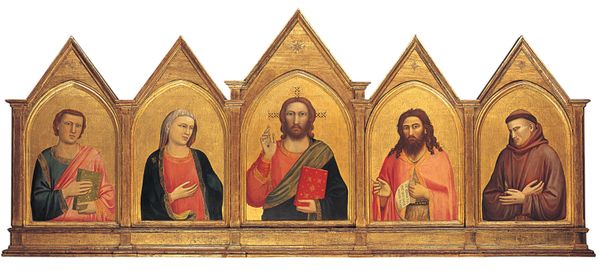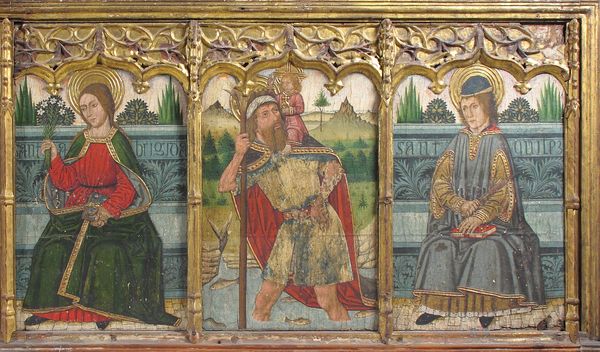
Saints Catherine of Alexandria, Barbara, Agatha, and Margaret 1465 - 1475
0:00
0:00
tempera, painting
#
portrait
#
tempera
#
painting
#
figuration
#
oil painting
#
history-painting
#
italian-renaissance
Dimensions: (a) overall 18 3/4 x 6 in. (47.6 x 15.2 cm), painted surface 18 1/4 x 5 1/2 in. (46.4 x 14 cm); (b) overall 18 3/4 x 6 in. (47.6 x 15.2 cm), painted surface 18 3/8 x 5 5/8 in. (46.7 x 14.3 cm); (c) overall 18 3/4 x 6 in. (47.6 x 15.2 cm), painted surface 18 3/8 x 5 3/8 in. (46.7 x 13.7 cm); (d) overall 18 3/4 x 6 in. (47.6 x 15.2 cm), painted surface 18 1/4 x 5 5/8 in. (46.4 x 14.3 cm)
Copyright: Public Domain
Giovanni di Paolo created these panels of Saints Catherine, Barbara, Agatha, and Margaret in the early 15th century, using tempera and gold on wood. Tempera painting involves mixing pigments with a binding agent – often egg yolk – which creates a fast-drying, matte finish. The gold leaf, applied meticulously, symbolizes divine light and elevates the figures. These materials weren't just about aesthetics; they were deeply rooted in the period's religious and social context. Consider the labor involved: grinding pigments, preparing the wooden panels, and the precise application of gold leaf and paint. The artist would likely have had assistants, each playing a role in the production process. The intense labor and precious materials reflect the value placed on religious art during this time, with the gilding highlighting the church’s wealth and power. Paying attention to materials and the process of making opens a deeper appreciation of the artwork’s meaning, bridging the perceived gap between craft and fine art.
Comments
No comments
Be the first to comment and join the conversation on the ultimate creative platform.
